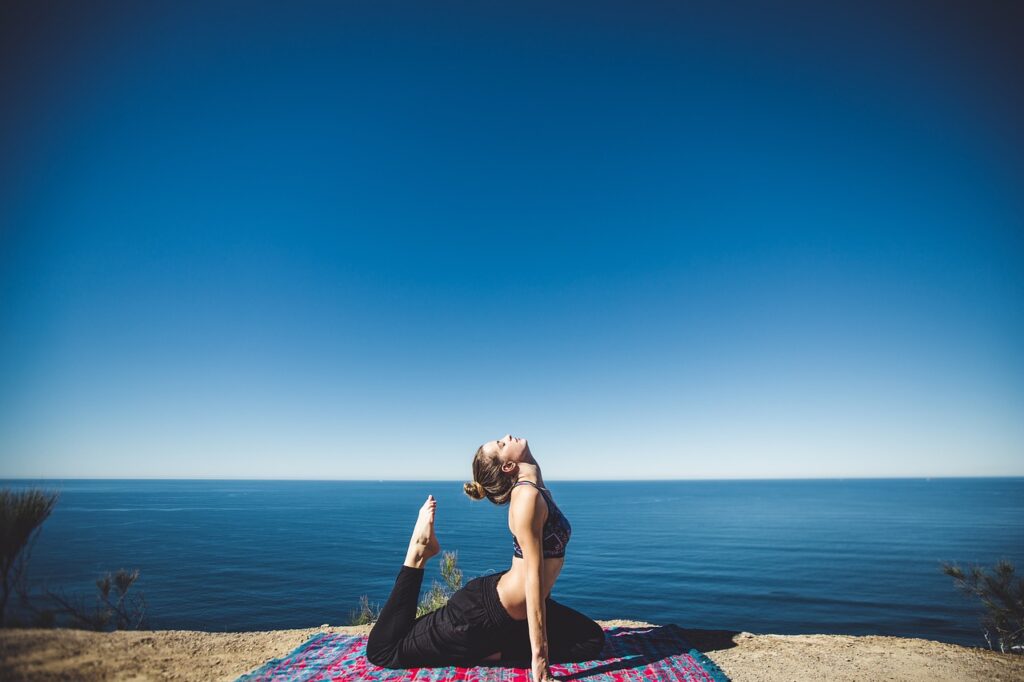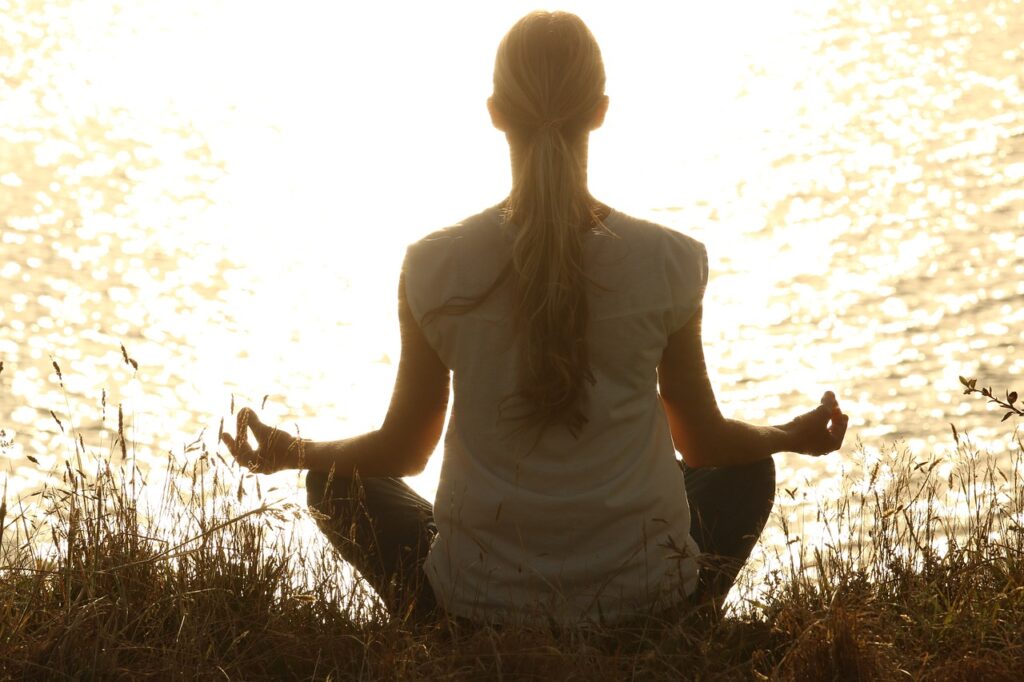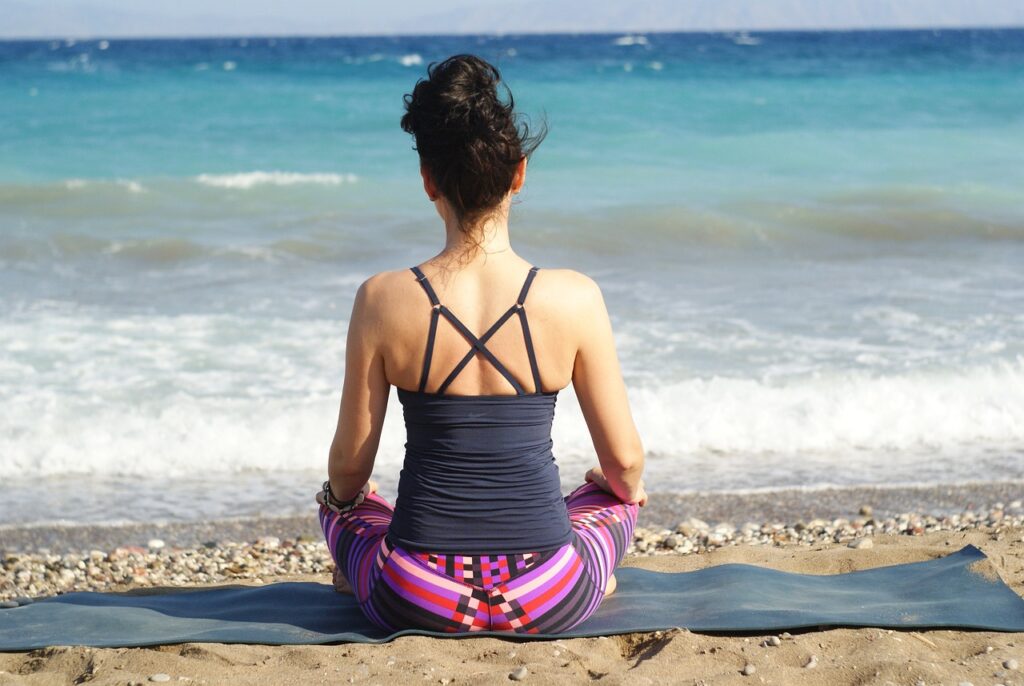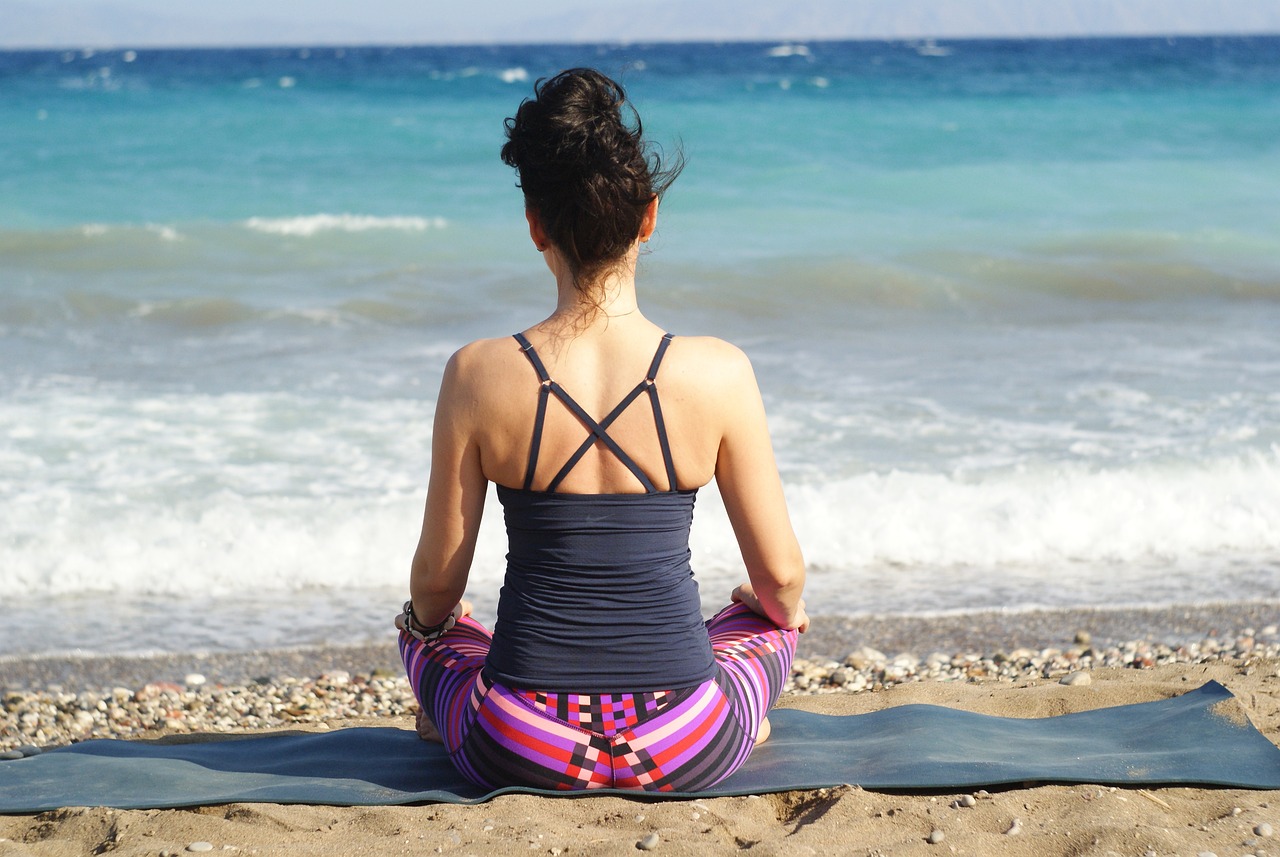If you’re struggling with lower back pain, you may be wondering if yoga can offer any relief. Well, the good news is that there are indeed yoga poses specifically designed to alleviate lower back pain. By gently stretching and strengthening the muscles in your back, these poses can provide much-needed relief and promote healing. Whether you’re a seasoned yogi or new to the practice, incorporating these poses into your routine can be a game-changer for your back health. So, let’s explore some of these yoga poses and discover the benefits they can bring to your lower back.
What causes lower back pain?
Lower back pain can be caused by a variety of factors, and understanding the underlying cause is crucial for finding effective relief. Some common causes of lower back pain include muscle strain, disc injury, sciatica, arthritis, poor posture, and a sedentary lifestyle.
Muscle strain
Muscle strain is one of the most common causes of lower back pain. It typically occurs as a result of overstretching or tearing the muscles and ligaments supporting the lower back. This can happen due to improper lifting, repetitive motions, or sudden movements.
Disc injury
A disc injury, such as a herniated or slipped disc, can also lead to lower back pain. The discs in our spine act as shock absorbers, but when they become damaged or displaced, they can press on nearby nerves, causing pain and discomfort.
Sciatica
Sciatica refers to the irritation or compression of the sciatic nerve, which runs from the lower back down through the legs. This condition can cause radiating pain, numbness, tingling, and weakness in the lower back and legs.
Arthritis
Arthritis, particularly osteoarthritis, can affect the joints in the lower back and lead to pain and stiffness. As we age, the cartilage that cushions our joints may wear down, resulting in discomfort and limited mobility.
Poor posture
Maintaining poor posture for extended periods of time can strain the muscles and ligaments in the lower back. Slouching, hunching over a computer, or standing incorrectly can all contribute to lower back pain.
Sedentary lifestyle
A sedentary lifestyle, characterized by long periods of sitting or inactivity, can weaken the muscles in the back and lead to lower back pain. Lack of regular exercise and physical activity can also contribute to weight gain, which puts additional strain on the lower back.
Benefits of practicing yoga for lower back pain relief
Yoga has been recognized as an effective practice for alleviating lower back pain. Regular yoga practice can provide numerous benefits that contribute to pain relief and improved overall well-being.
Increased flexibility
Yoga involves a wide range of stretching and movement, which can help increase flexibility in the muscles and joints of the lower back. Improved flexibility can reduce muscle tension and alleviate lower back pain.
Strengthened muscles
Practicing yoga poses engages and strengthens the muscles in the back, abdomen, and hips, which are crucial for supporting the spine. Stronger muscles provide better support and stability, reducing the risk of lower back pain.
Improved posture
Yoga emphasizes proper alignment and posture. Regular practice can help correct and improve posture, which in turn reduces strain on the lower back. By aligning the body properly, the spine is supported in its natural curves, promoting a healthier back.
Enhanced body awareness
Yoga encourages a mindful connection between the body and mind. Through a heightened sense of body awareness, individuals can identify and correct imbalances or misalignments that may contribute to lower back pain.
Reduced stress and tension
Chronic stress and tension can contribute to lower back pain by causing muscle tightness and inflammation. Yoga incorporates relaxation techniques, deep breathing, and meditation, which can help reduce stress levels and promote relaxation in the body and mind.

Important considerations before starting yoga
Before starting a yoga practice for lower back pain relief, there are several important considerations to keep in mind.
Consulting a healthcare professional
If you have a history of chronic or severe lower back pain, it’s important to consult with a healthcare professional before starting a yoga practice. They can provide personalized advice and ensure that yoga is safe and suitable for your specific condition.
Choosing the right yoga style
There are various styles of yoga, each with its own focus and intensity. Some styles, such as gentle or restorative yoga, may be more suitable for individuals with lower back pain. It’s important to choose a style that aligns with your needs and abilities.
Modifying poses for individual needs
Not all yoga poses are suitable for everyone, especially those with lower back pain. It’s essential to listen to your body and modify poses to accommodate any limitations or discomfort. This may include using props, such as blocks or straps, to provide support and ease into the pose gradually.
Using props for support
Props can be incredibly helpful in providing support and stability during yoga practice. They can help individuals with lower back pain maintain proper alignment and prevent putting excessive strain on the spine. Props such as bolsters, blankets, and straps can be used to modify poses and make them more accessible.
Listening to your body
One of the most important aspects of a safe and effective yoga practice is listening to your body. Pay attention to any sensations or discomfort in the lower back and modify or avoid poses that exacerbate the pain. It’s crucial to honor your body’s limits and avoid pushing through pain.
Yoga poses for lower back pain relief
There are several yoga poses specifically targeted at relieving lower back pain. These poses help stretch and strengthen the muscles in the back, hips, and abdomen, promoting flexibility and stability.
Child’s Pose (Balasana)
Child’s Pose is a gentle stretch that helps elongate the spine, release tension in the lower back, and promote relaxation. Start by kneeling on the floor, bringing the big toes together, and sitting back on your heels. Stretch your arms forward and lower your chest towards the floor, resting your forehead on the mat. Breathe deeply and hold the pose for several breaths.
Cat and Cow Pose (Marjaryasana and Bitilasana)
Cat and Cow Pose is a dynamic movement that helps improve flexibility and mobility in the spine. Start on your hands and knees, aligning your wrists directly under your shoulders and your knees beneath your hips. Inhale as you drop your belly towards the mat, arching your back and lifting your head and tailbone (Cow Pose). Exhale as you round your spine, tucking your chin and tailbone under (Cat Pose). Continue moving between the two poses, syncing your breath with the movement.
Downward-Facing Dog (Adho Mukha Svanasana)
Downward-Facing Dog is a rejuvenating pose that stretches the entire body, including the lower back. Start on your hands and knees, then press into your hands and lift your hips towards the ceiling, forming an inverted V shape. Keep your knees slightly bent and your heels reaching towards the ground. Lengthen your spine and relax your neck. Hold the pose for a few breaths, focusing on releasing tension in the lower back.
Extended Triangle Pose (Trikonasana)
Extended Triangle Pose helps stretch and strengthen the muscles in the legs, hips, and lower back. Start by standing with your feet wide apart. Turn your right foot out 90 degrees and extend your arms out to the sides. Hinge at your right hip and reach your right hand towards your right foot, keeping your left arm extended towards the ceiling. Keep both legs straight and your torso facing forward. Hold the pose for several breaths, then switch sides.
Bridge Pose (Setu Bandha Sarvangasana)
Bridge Pose is a gentle backbend that strengthens the glutes, hamstrings, and lower back muscles. Start by lying on your back with your knees bent and your feet hip-width apart. Press your feet into the ground and lift your hips off the mat, engaging your glutes and core. Keep your arms by your sides or clasp your hands together beneath your back. Hold the pose for several breaths, then slowly lower your hips back down.
Supine Knee-to-Chest Pose
Supine Knee-to-Chest Pose helps release tension in the lower back and stretch the glutes and hips. Start by lying on your back with your legs extended. Bring one knee towards your chest, interlacing your fingers around your shin or thigh. Keep your other leg extended or bent slightly at the knee. Gently pull your knee closer to your chest, feeling a stretch in the lower back and glutes. Hold the pose for several breaths, then switch sides.
Pigeon Pose (Eka Pada Rajakapotasana)
Pigeon Pose is a deep hip opener that helps release tension in the hips and lower back. Start in a high plank position, then bring your right knee towards your right wrist and your right foot towards your left wrist. Extend your left leg straight back and lower your hips towards the ground. Keep your torso upright or fold forward over your front leg for a more intense stretch. Hold the pose for several breaths, then switch sides.
Seated Forward Bend (Paschimottanasana)
Seated Forward Bend is a calming pose that stretches the entire back of the body, including the hamstrings and lower back. Start by sitting on the floor with your legs extended in front of you. Inhale as you lengthen your spine, then exhale and fold forward from the hips, reaching towards your feet. Keep your spine extended and your shoulders relaxed. If you have limited flexibility, you can use a strap around your feet to assist in the stretch. Hold the pose for several breaths.
Child’s Pose with a Twist
Child’s Pose with a Twist stretches the muscles in the back and promotes spinal rotation. Start in Child’s Pose, then reach your right hand towards your left side, threading it underneath your left arm. Allow your right shoulder and ear to rest on the mat. You can extend your left arm forward or bring it to your lower back for support. Hold the pose for several breaths, then switch sides.
Corpse Pose (Savasana)
Corpse Pose is a deeply restorative pose that allows the body and mind to relax completely. Lie on your back with your arms by your sides, palms facing up. Close your eyes and allow your body to melt into the mat. Focus on your breath and let go of any tension or stress in the body. Stay in this pose for several minutes, allowing yourself to fully surrender and restore.

How to practice the yoga poses
To practice the yoga poses for lower back pain relief effectively and safely, follow these guidelines:
Start with a warm-up
Before engaging in any yoga practice, it’s essential to warm up the body. This could include gentle movements, such as neck rolls, shoulder rolls, and gentle twists, to prepare the muscles and joints for the poses.
Use proper alignment
Proper alignment is crucial to ensure that you are getting the most benefit from each pose and minimizing the risk of injury. Pay attention to the instructions provided for each pose and try to align your body accordingly.
Focus on the breath
Throughout your yoga practice, remember to focus on your breath. Deep, slow breathing can help relax the body and calm the mind. Coordinate your breath with each movement and try to maintain a steady rhythm.
Hold each pose for a few breaths
When practicing the yoga poses, hold each pose for a few breaths to allow the muscles to release and elongate. Avoid rushing through the poses and instead aim for a slow and deliberate practice.
Modify poses if needed
If a pose feels uncomfortable or exacerbates your lower back pain, don’t hesitate to modify or skip it. Use props, such as blocks or blankets, to support the body and make the pose more accessible. Always listen to your body and honor its limitations.
Don’t push through pain
While some discomfort or gentle stretching sensations may be normal in yoga, it’s important to distinguish between discomfort and pain. Never push through pain and always modify or skip poses that cause sharp or intense pain in the lower back.
Gradually increase the intensity and duration
As your body adapts and becomes more comfortable with the yoga practice, you can gradually increase the intensity and duration of the poses. Start with shorter practice sessions and gradually work your way up to longer sessions.
Other techniques to alleviate lower back pain
In addition to practicing yoga, other techniques can help alleviate lower back pain and support the healing process. Consider incorporating the following techniques into your routine:
Meditation
Meditation can help reduce stress and promote relaxation, which can alleviate lower back pain. Taking a few minutes each day to sit quietly, focus on your breath, and calm your mind can have a profound impact on your overall well-being.
Gentle stretching
Incorporating gentle stretching exercises into your daily routine can help improve flexibility and reduce muscle tension in the lower back. Focus on stretches that target the muscles of the hips, hamstrings, and lower back for optimal relief.
Hot and cold therapy
Applying heat or cold to the affected area can provide temporary relief from lower back pain. Heat therapy, such as using a heating pad or taking a warm bath, can help relax tense muscles. Cold therapy, such as applying an ice pack or using a cold compress, can help reduce inflammation and numb pain.
Massage therapy
Massage therapy can help relieve muscle tension and promote relaxation in the lower back. A licensed massage therapist can apply various techniques to target specific areas of pain and help alleviate discomfort.
Physical therapy
Working with a physical therapist can be beneficial for individuals with chronic or severe lower back pain. Physical therapy involves specific exercises, stretches, and techniques to improve strength, flexibility, and mobility, all of which contribute to pain relief and long-term recovery.
Over-the-counter pain relievers
When experiencing acute or short-term lower back pain, over-the-counter pain relievers can provide temporary relief. Nonsteroidal anti-inflammatory drugs (NSAIDs), such as ibuprofen, can help reduce pain and inflammation. However, it’s important to use these medications as directed and consult with a healthcare professional if pain persists or worsens.

Precautions to take while practicing yoga
While yoga can be a valuable tool for lower back pain relief, it’s important to take certain precautions to ensure a safe and effective practice.
Avoid overstretching
While it’s important to stretch and lengthen the muscles, avoid overstretching or pushing your body beyond its limits. Gradually progress in your yoga practice and listen to your body’s signals to avoid injury.
Avoid deep backbends if experiencing acute pain
If you’re experiencing acute lower back pain, it’s best to avoid deep backbends that put excessive strain on the lower back. Focus on gentle stretches and poses that promote stability and comfort instead.
Avoid poses that worsen the pain
If a particular pose exacerbates your lower back pain, avoid it and seek alternatives that target the same muscle groups without causing discomfort. Every body is unique, so it’s important to explore what works best for you.
Seek expert guidance if uncertain about a pose
If you’re unsure about the correct alignment or execution of a pose, seek guidance from a qualified yoga instructor or healthcare professional. They can provide valuable insights and ensure that you’re practicing safely and effectively.
Avoid forcing the body into uncomfortable positions
Never force your body into uncomfortable or painful positions. Yoga should be a practice of self-care and listening to your body’s needs. Respect your limitations and work within them to cultivate a safe and enjoyable practice.
When to seek medical help
While yoga can be a beneficial practice for lower back pain relief, there are certain situations in which it’s important to seek medical help. If you experience any of the following, consider contacting a healthcare professional:
Chronic or severe pain
If your lower back pain persists for an extended period or is severe in intensity, it’s crucial to consult with a healthcare professional. They can help identify the underlying cause of your pain and recommend appropriate treatment options.
Pain accompanied by other symptoms
If your lower back pain is accompanied by other concerning symptoms, such as numbness, tingling, weakness, or changes in bladder or bowel function, it may indicate a more serious underlying condition. Seek medical help immediately.
Pain persists despite trying conservative treatments
If you’ve tried conservative treatments, such as yoga, stretching, and over-the-counter pain relievers, but your lower back pain continues to persist or worsen, it’s important to consult with a healthcare professional. They can determine if further evaluation or intervention is necessary.
History of spinal conditions or injuries
If you have a history of spinal conditions or injuries, it’s advisable to seek medical guidance before starting a yoga practice. A healthcare professional can provide personalized recommendations and ensure that yoga is safe and suitable for your specific condition.
Conclusion
Lower back pain can significantly impact our daily lives and overall well-being. Practicing yoga can be a valuable tool for finding relief from lower back pain and promoting a healthy spine. By incorporating yoga into your routine and following proper alignment and modifications, you can strengthen your muscles, improve flexibility, and enhance body awareness. However, it’s important to listen to your body, avoid forcing uncomfortable positions, and seek medical help when necessary. Remember, a regular yoga practice combined with other supportive techniques can contribute to a pain-free and comfortable life.

